Unraveling the Hypoallergenic Myth: Are Aussiedoodles Truly a Breath of Fresh Air

When it comes to choosing a furry companion, individuals with allergies or asthma often find themselves at a crossroads. Enter the Aussiedoodle, a charming crossbreed known for its adorable looks and potential hypoallergenic qualities. But amidst the allure of a sneeze-free existence, a critical question lingers: Are Aussiedoodles truly hypoallergenic? In this article, we dive deep into the world of Aussiedoodles to unravel the truth behind their hypoallergenic status and help you make an informed decision.
Are Aussiedoodles Hypoallergenic?
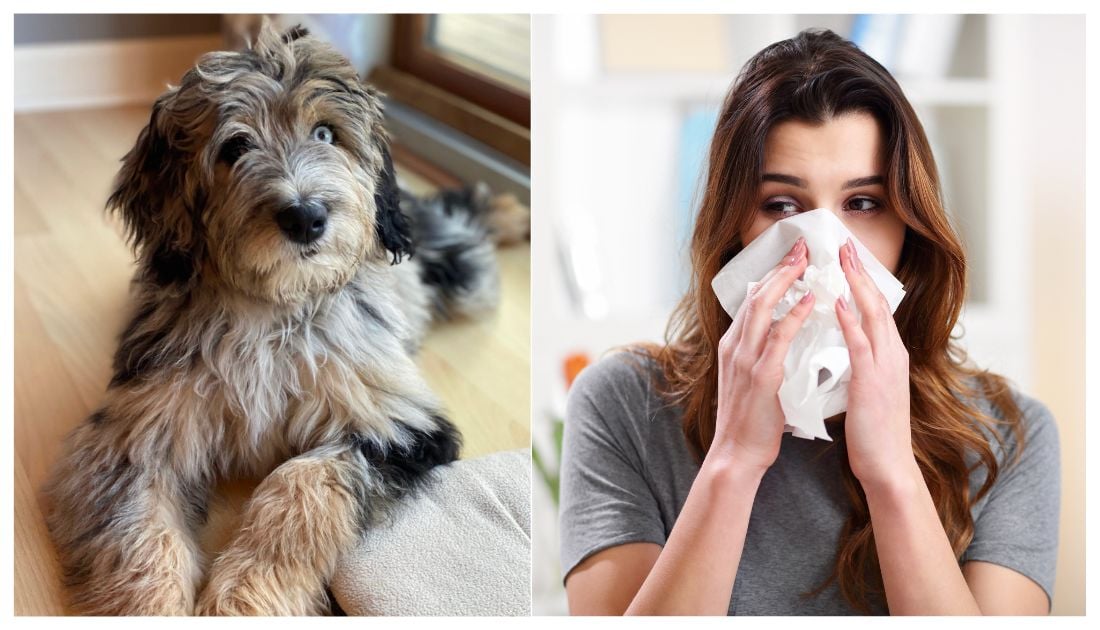
To understand the hypoallergenic nature of Aussiedoodles, we embark on a fascinating journey through their lineage. By examining the genetic makeup of this crossbreed, which combines the Australian Shepherd and Poodle breeds, we uncover the key factors that contribute to their potential hypoallergenic traits. While Poodles are renowned for their low-shedding and hypoallergenic coats, we uncover how these characteristics may carry over to Aussiedoodles.
In short, yes! Aussiedoodles are considered hypoallergenic dogs because of their poodle parents. As naturally hypoallergenic dogs, poodles pass this trait down to their puppies.
What does Hypoallergenic Mean?
But what does hypoallergenic really mean? The dictionary defines something as “hypoallergenic when it has a low likelihood of triggering allergic reactions. However, this usually goes for fabrics, lotions, and self-care products. You don’t usually end up rubbing your dog all over your face.
Is Hypoallergenic Really Even a Thing?
“No dog breed is entirely allergen-free”
Dr. Sarah Johnson, Veterinarian
“Hypoallergenic is a term often associated with certain dog breeds, but it’s important to understand that no dog breed is entirely allergen-free. While some breeds may produce fewer allergens or cause milder reactions in allergic individuals, it ultimately depends on the person’s specific allergies and sensitivities. It’s crucial for potential dog owners with allergies to spend time with the breed they are considering and gauge their personal response before making a decision.”
What Causes Dog Allergies in Humans?
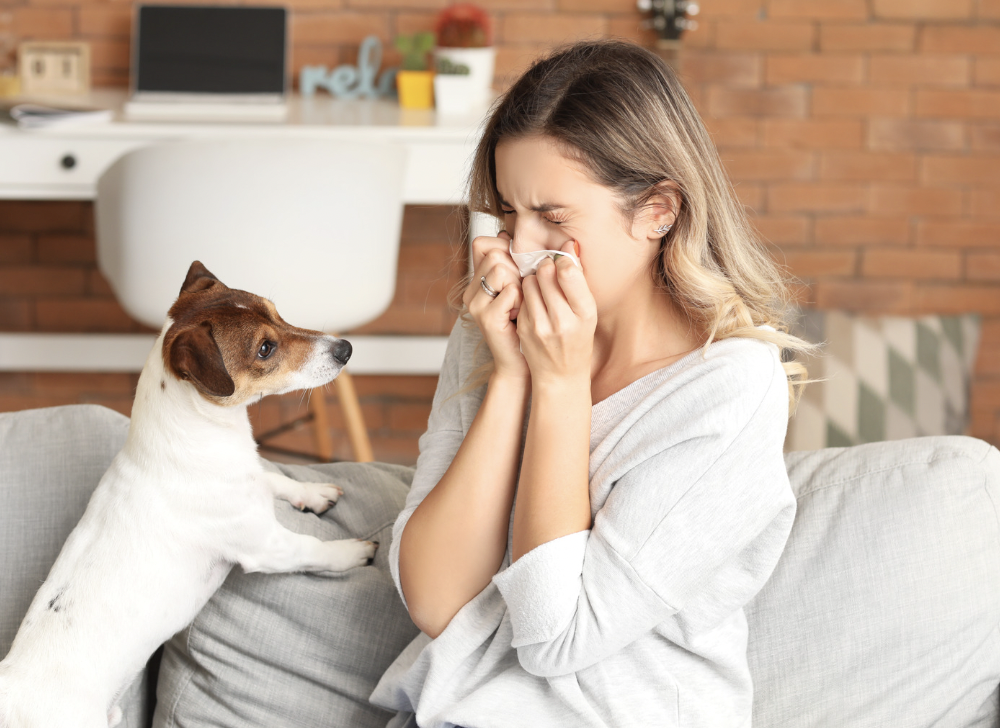
In dogs, protein compounds found in saliva, feces, urine, and dander are the leading cause of dog allergies. While we can’t control how much spit our dogs have or whether or not they go to the bathroom, we can maintain their coats to ensure they don’t shed as much dander into the air. That’s where the term “hypoallergenic” comes in.
What Dog Breeds are the Most Hypoallergenic?
Hypoallergenic dog breeds are less likely to shed dander into the air. So, dogs with curly or wiry fur, no fur, or hair instead of fur are your most likely options for a hypoallergenic dog. Small breeds like the Bichon-Friese, Yorkshire Terrier, and Shih-Tzu are popular hypoallergenic dogs. Poodles and poodle mixes of all sizes are also great hypoallergenic dogs because their loose fur gets stuck among their fluffy curls.
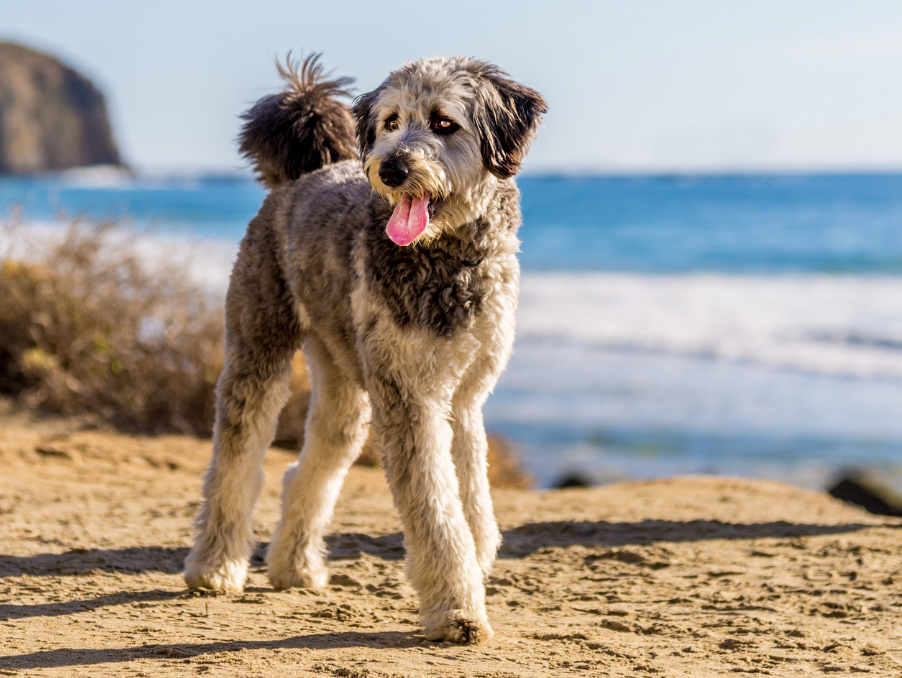
What Dog Breeds are the Least Hypoallergenic?
Regarding least hypoallergenic breeds, dogs that shed a lot are your biggest culprits for the sniffles. Dogs with double coats like Shiba Inus, Corgis, and Huskies are all considered heavy shedders and aren’t hypoallergenic whatsoever– you’ll instead be surrounded by a cloud of fluff!
Dog Allergy Symptoms
So, how do we know what dog allergies look like? When our bodies are exposed to the allergy-triggering proteins in doggy dander, our immune systems treat these proteins like a malicious virus. They release immunoglobulins to flag and attack the protein compounds as a contaminant; that’s why your allergy symptoms are similar to a cold. If you have dog allergies, you may experience:
- Sniffling and sneezing
- Coughing
- A runny nose
- Red, itchy eyes
- Itchy skin or hives
- Watery eyes
How Can I Reduce My Allergy Triggers to Aussiedoodles?
If you’re a doodle lover and want to give puppy parenting a shot despite the allergies, there are a few things you can do to make your life easier:
1. Clean Often
For starters, cleaning your living space often is the best way to remove dander from the floors and high-contact surfaces. Vacuuming and dusting weekly and using a machine-washable couch cover can make a world of difference when it comes to removing pet hair lying around your home!

2. Consider an Air Filter
Air or HVAC filters are also great for reducing the amount of loose dander and fur floating around in your home. The American College of Allergy, Asthma, and Immunology recommends using HEPA filters for smaller living spaces and single rooms and HVAC filters with a MERV between 11 and 13 for larger homes.
3. Hang out with an Aussiedoodle
If you have a genuine interest in Aussidedoodles, it is important to take the right steps to ensure a successful match. Start by researching and connecting with reputable breeders or dedicated Aussidedoodle owners in your local area.
When evaluating a potential Aussidedoodle, it’s crucial to consider any potential allergies. Requesting to spend quality time with the dog, allowing it to lick you and being in close proximity to its fur, can help gauge your reaction. It is advisable to avoid environments where there are cats, as their presence could interfere with accurate test results.
If your initial interactions with the Aussidedoodle go well, you may want to explore the possibility of borrowing one of the breeder’s dogs for a longer period, such as an afternoon or even overnight. This extended exposure will provide a better understanding of how you might react to the dog over an extended timeframe.
Remember, taking these steps and consulting with professionals in the field can help you make an informed decision regarding Aussidedoodles and potential allergies.
4. Make sure you bath the dog regularly
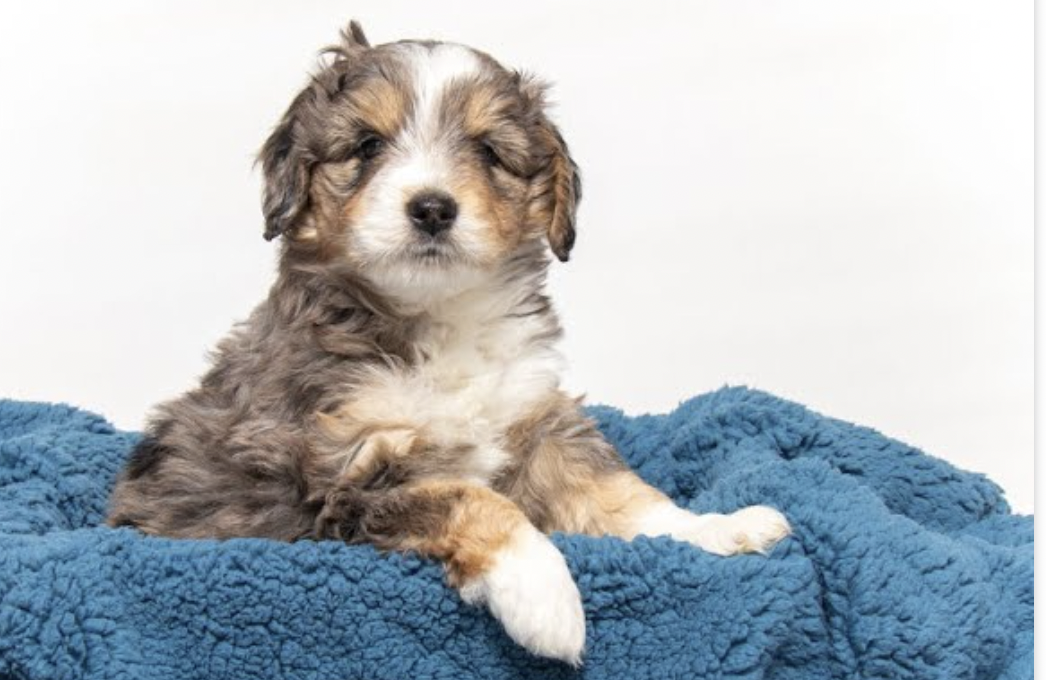
Bathing helps get rid of dead skin cells
5. Keep him groomed and brushed regularly
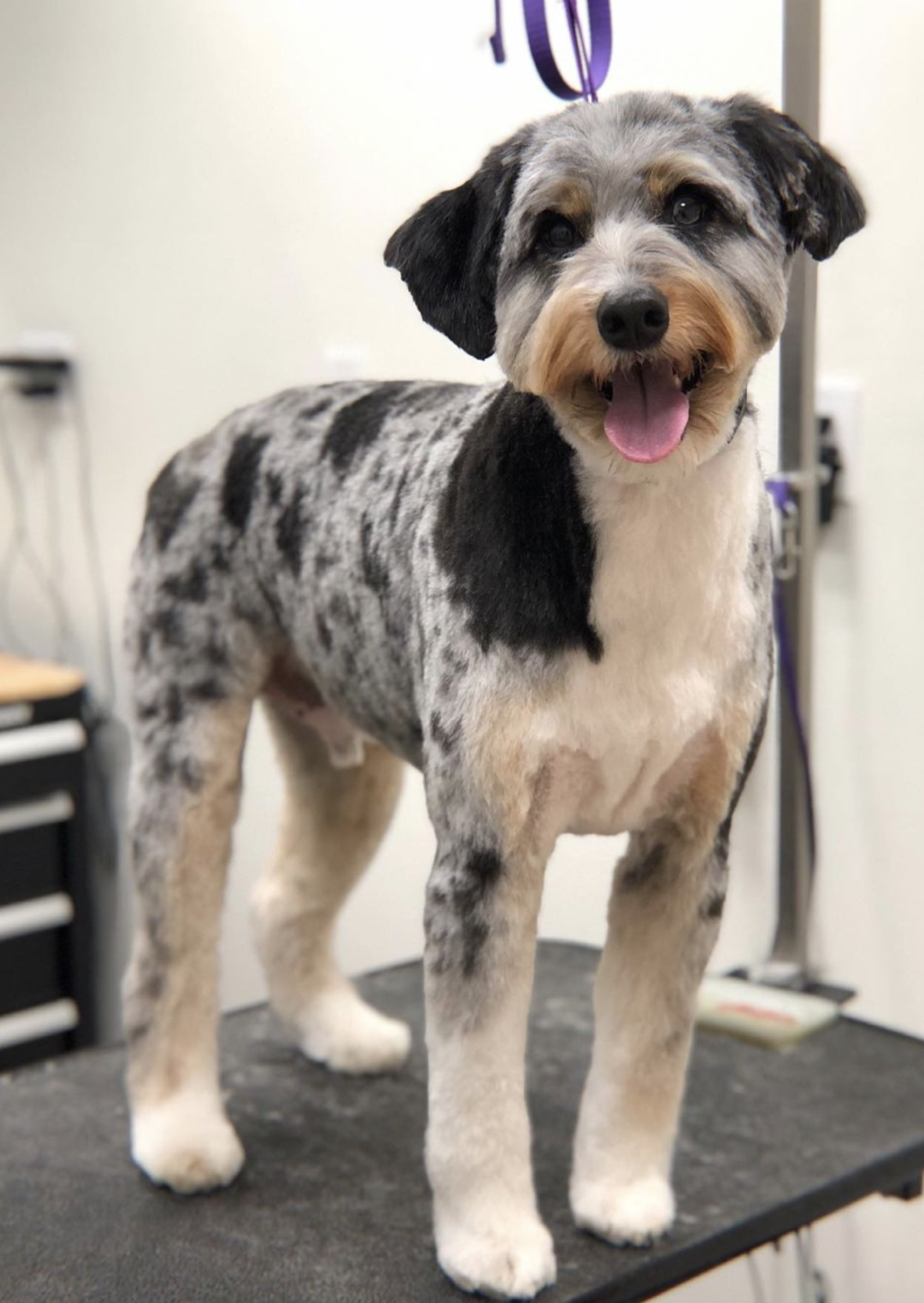
6. Do your grooming outside, and use gloves if needed

7. Stay on top of pests; more scratching means more dander flying everywhere
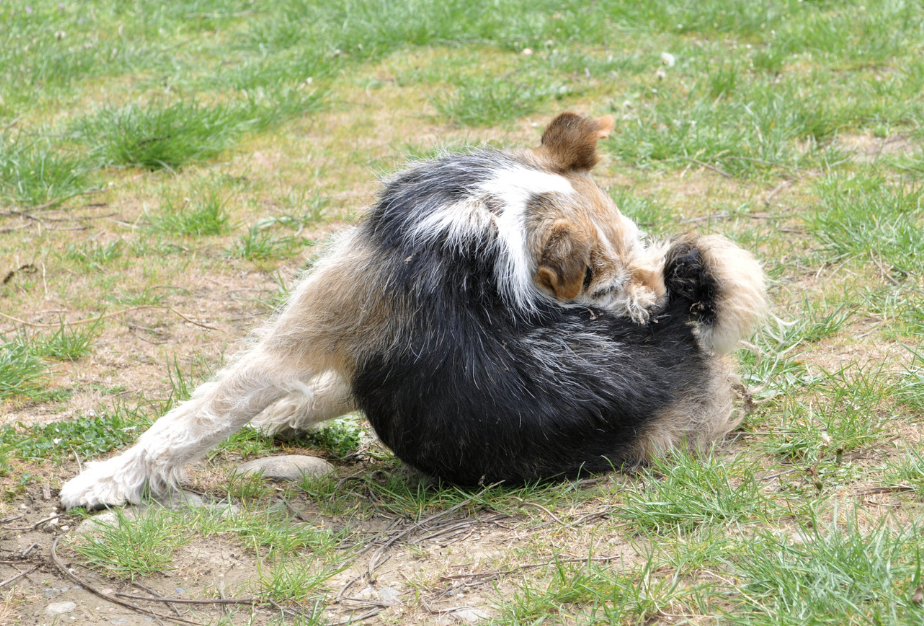
8. Vacuum your carpet and furniture often
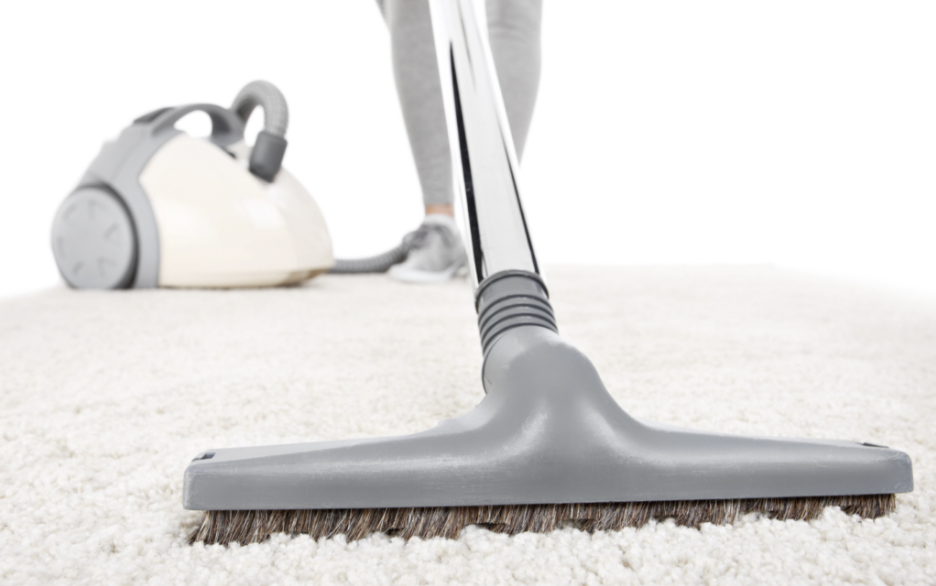
Frequently Asked Questions
Still have questions? We have answers! Check out our FAQ:
Are all Aussiedoodles hypoallergenic?
All Aussiedoodles are considered hypoallergenic.
Are mini Aussiedoodles hypoallergenic?
Yes! Mini Aussiedoodles are hypoallergenic.
Are F1 Aussiedoodles hypoallergenic?
Yes they are! As you breed future generations of Aussiedoodle with non-hypoallergenic dogs, they will lose their hypoallergenic quality.
Are Aussiedoodles more hypoallergenic than Goldendoodles?
They’re about the same.
Are Aussiedoodles hypoallergenic?
Yes! This is because Aussiedoodles inherit their curly coats from a poodle parent.
Do Aussiedoodles shed a lot?
Aussiedoodles shed a moderate amount.
What causes pet allergies?
Proteins found in pet dander, saliva, urine, and feces cause pet allergies.
Can people with allergies keep Aussiedoodles as pets?
Yep! They’ll just have to take some extra precautions to prevent allergy flare-ups.
What are the symptoms of pet allergies?
The most common symptoms of pet allergies are a runny nose, red or itchy eyes, and a sore throat.
How can I reduce my exposure to pet allergens?
Cleaning frequently is the best way to reduce your exposure to pet allergens. You can also invest in an air-purifier for allergies to remove dander and pollen from the air.
What are some hypoallergenic dog breeds?
Poodles, Shih Tzus, and Xoloitzcuintlis are all hypoallergenic breeds. They have curly fur, hair instead of fur, and no fur respectively.
Can regular grooming help reduce pet allergens?
Yes it can! Just make sure that you use a moisturizing shampoo without parabens to avoid your dog developing dry, flaky skin.
What are some common allergens found in pet dander?
Pet dander can also contain mold spores, pollen, and dust mites with it.
Are there any medications or treatments that can help alleviate pet allergies?
Yep! Over-the-counter allergy medications like Benadryl are great for mild pet allergies. Doctor-prescribed allergy shots are also a nice alternative for people with more severe allergies.
Do hypoallergenic dog breeds exist?
Yes, they do! Hypoallergenic dog breeds usually have curly or wiry coats, hair instead of fur and are low-shedders.
Can Aussiedoodles cause asthma attacks?
For people with dog allergies and asthma, Aussiedoodle dander may cause asthma attacks.
How do I know if I’m allergic to Aussiedoodles?
You might have an allergy if you experience allergy symptoms like a runny nose or itchy eyes when around Aussiedoodles.
Can children with allergies keep Aussiedoodles as pets?
Yes, they can! Just make sure to keep your living area clean and groom your doodle frequently.
How can I prepare my home for Aussiedoodles if I have allergies?
One of the best things you can do to prep for allergens in your home is to create an allergen-free zone. For dogs, this means creating an off-limits space just for you.
What are some non-allergenic pets?
Reptiles and amphibians make great non-allergenic pets!
Can allergy shots help with pet allergies?
Allergy shots can help with pet allergies but require a doctor’s prescription.
What are some common allergens found in dog saliva?
Dog saliva contains the same proteins that are also found in pet dander, which is why dog spit might make your skin itchy.
How often do I need to groom my Aussiedoodle?
Try to brush your doodle once a day, and give them a nice bath once a week.
Are Goldendoodles suitable for people with allergies?
Goldendoodles are great dogs for people with allergies!
Related Articles:
- 67 Shades of Doodles: Discovering the Charm of These Popular Designer Dogs
- The Aussie Mountain Doodle: A Perfect Blend of Australian Charm and Mountain Majesty
- Could the Aussiedoodle Be Your Dream Dog? Only If You Can Keep Up!
